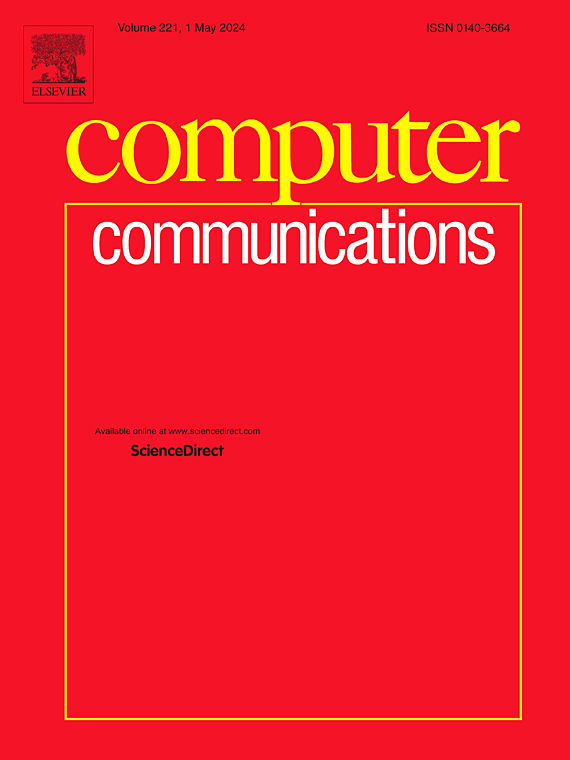注意您选择的路径:使用路径预处理加速基于分段路由的流量工程
IF 4.5
3区 计算机科学
Q1 COMPUTER SCIENCE, INFORMATION SYSTEMS
引用次数: 0
摘要
许多最先进的分段路由(SR)交通工程(TE)算法依赖于基于线性规划(LP)的优化。然而,后者的可伸缩性差以及由此产生的高计算时间严重限制了这种方法在许多用例中的实际可用性。解决这些问题的一个有希望的方法是,通过采用某些预处理策略,预先限制优化过程中考虑的SR路径的数量。在本文的第一部分中,我们对这种预处理方法进行了广泛的文献综述,并对大量现实世界拓扑进行了大规模的比较性能研究,包括来自一级互联网服务提供商(ISP)的最新数据。在第二部分中,我们使用从前一研究中获得的见解来开发一种新的组合预处理方法,该方法也保证不会干扰实际重要的延迟约束的可满足性。我们的方法能够将优化过程中需要考虑的SR路径数量减少97%-99%,同时仍然允许获得接近最优解。这使得不同的基于lp的SR TE算法的加速提高了大约10倍,这是以前任何现有方法所能实现的两倍多。最后,我们还研究了路径预处理范式对战术TE用例的适用性,表明它在这种情况下也促进了约37%的加速。总而言之,这是对当前技术的重大改进,并进一步促进了在大型分段路由网络中可靠地使用基于lp的TE优化。本文章由计算机程序翻译,如有差异,请以英文原文为准。
Mind the paths you choose: Speeding up segment routing-based traffic engineering with path preprocessing
Many state-of-the-art Segment Routing (SR) Traffic Engineering (TE) algorithms rely on Linear Program (LP)-based optimization. However, the poor scalability of the latter and the resulting high computation times impose severe restrictions on the practical usability of such approaches for many use cases. A promising way to address these issues is to preemptively limit the number of SR paths considered during optimization by employing certain preprocessing strategies. In the first part of this paper, we conduct an extensive literature review of such preprocessing approaches together with a large-scale comparative performance study on a plethora of real-world topologies, including recent data from a Tier-1 Internet Service Provider (ISP). In the second part, we then use the insights gained from the former study to develop a novel combined preprocessing approach which also guarantees to not interfere with the satisfiability of practically important latency bound constraints. Our approach is able to reduce the number of SR paths to consider during optimization by as much as 97%–99%, while still allowing to achieve close to optimal solutions. This facilitates an around 10 speedup for different LP-based SR TE algorithms, which is more than twice as good as what is achievable with any of the previously existing methods. Finally, we also study the applicability of the path preprocessing paradigm to the use case of tactical TE, showing that it facilitates an around 37% speedup in this context as well. All in all, this constitutes a major improvement over the current state-of-the-art and further facilitates the reliable use of LP-based TE optimization for large segment-routed networks.
求助全文
通过发布文献求助,成功后即可免费获取论文全文。
去求助
来源期刊

Computer Communications
工程技术-电信学
CiteScore
14.10
自引率
5.00%
发文量
397
审稿时长
66 days
期刊介绍:
Computer and Communications networks are key infrastructures of the information society with high socio-economic value as they contribute to the correct operations of many critical services (from healthcare to finance and transportation). Internet is the core of today''s computer-communication infrastructures. This has transformed the Internet, from a robust network for data transfer between computers, to a global, content-rich, communication and information system where contents are increasingly generated by the users, and distributed according to human social relations. Next-generation network technologies, architectures and protocols are therefore required to overcome the limitations of the legacy Internet and add new capabilities and services. The future Internet should be ubiquitous, secure, resilient, and closer to human communication paradigms.
Computer Communications is a peer-reviewed international journal that publishes high-quality scientific articles (both theory and practice) and survey papers covering all aspects of future computer communication networks (on all layers, except the physical layer), with a special attention to the evolution of the Internet architecture, protocols, services, and applications.
 求助内容:
求助内容: 应助结果提醒方式:
应助结果提醒方式:


